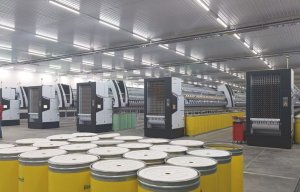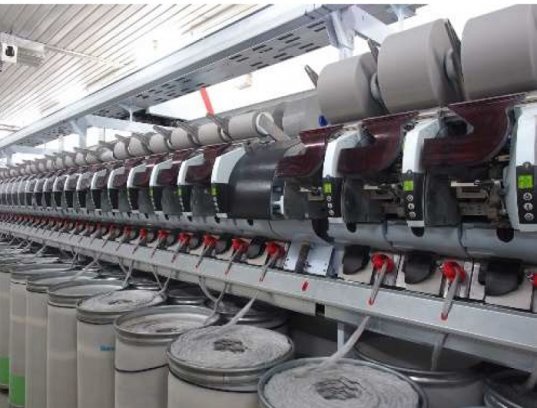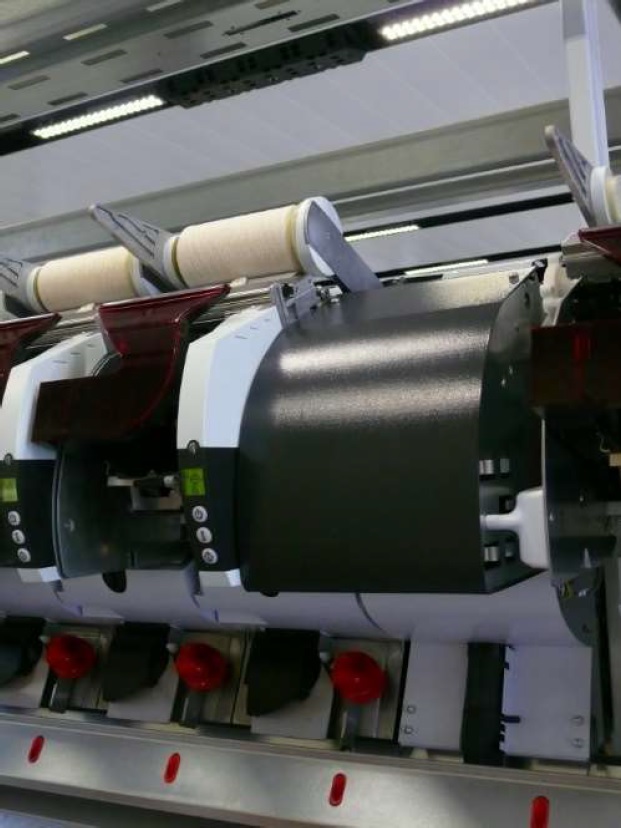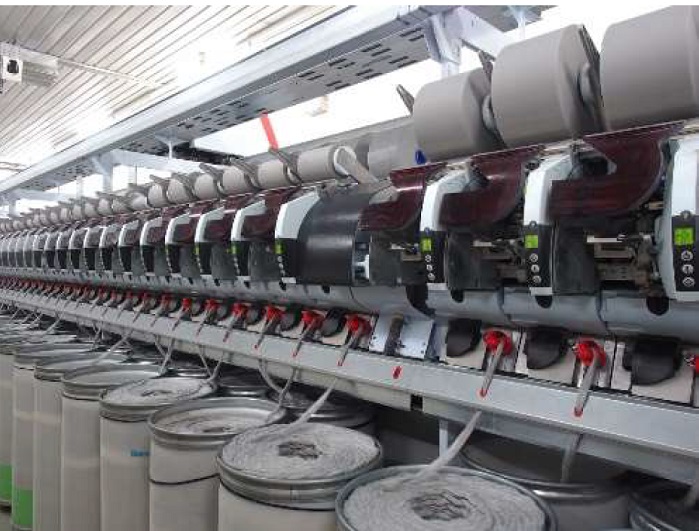
Biska’s new rotor spinning supersite
Schlafhorst is introducing a new Vacuum Trash Cleaner (VTC), an innovative unit for the Autocoro 9.

7th June 2018
Innovation in Textiles
|
Übach-Palenberg
 The Saurer Group Business Unit Spinning brand Schlafhorst, with the product brands Autocoro, BD and Autoconer, is introducing a new Vacuum Trash Cleaner (VTC), an innovative unit for the Autocoro 9.
The Saurer Group Business Unit Spinning brand Schlafhorst, with the product brands Autocoro, BD and Autoconer, is introducing a new Vacuum Trash Cleaner (VTC), an innovative unit for the Autocoro 9.
According to the company, it improves automated cleaning of the rotor spinning machine and thus increases its profitability. “The VTC increases the raw material tolerance of the Autocoro 9, reducing spinning costs further. The spinning of recycled or coarse yarns generates a lot of fibre waste due to the high material throughput,” it says. “The E3-optimised innovation counteracts this. It significantly reduces the manpower required to keep the machines clean in these applications.”
The VTC is located in the middle of the machine, where it vacuums the dirt removal conveyor belt halfway. As a result, less fibre material accumulates on the belt, so that it does not pile up even with larger quantities of waste. The fibre dust can no longer fall down, get swirled up or contaminate the machine from the inside.
“The advantages of this innovation in automation are evident,” the company explains. “The manual effort for cleaning the spinning boxes and winding devices, as well as the underside of the machine, is reduced substantially. The fibre waste is taken to where it belongs: the dirt collection chamber. In addition, the brush housing stays clean for much longer, meaning that brush cleaning can be reduced by up to 80%. With a cleaning cycle of 10 minutes per machine, this measure alone quickly saves the expense of an operator.”
Maximum productivity, minimum raw material costs, best yarn quality – a rotor spinning mill has to strike a reasonable compromise between these goals every day. With its extremely high piecing capacity thanks to SynchroPiecing, the Autocoro 9 aims to give spinning mills more flexibility in the selection of raw materials. The VTC is now said to significantly boost the raw material tolerance of the Autocoro 9 further. It is designed to prevent fibre build-ups in the spinning box area underneath the machine and thus reduces contamination of the yarn with dirt particles.

“The spinning stability increases, which reduces yarn breakage,” the company adds. “The greater cleanliness ensures better IPI values and an overall higher yarn quality. This ultimately also increases productivity, as the Corolab has to intervene much less frequently with cleaning cuts.”
The Autocoro 9 has been developed to deliver triple added value to spinning mills in terms of energy, economics and ergonomics. This also makes it the benchmark for recycling. Even at extremely high rotor speeds, the Autocoro 9 is said to achieve efficiency levels of more than 99% thanks to SynchroPiecing. With spinning components that have been specially optimised for recycling applications, the Autocoro 9 also spins yarns with higher strength from critical raw materials. A special opening roller protects the stressed fibres.
The VTC improves this added value of the Autocoro 9 – especially in long machines. “This opens up new savings opportunities for spinning mills,” the company says. Raw material accounts for a large part of the spinning costs. A cost saving of 1 ct/kg weaving yarn (Ne 10) with a production capacity of just under 10,000 kg per day, which is what an Autocoro 9 with 720 spinning positions can achieve, adds up to annual savings of more than EUR 35,000 for each machine, according to the manufacturer.

Business intelligence for the fibre, textiles and apparel industries: technologies, innovations, markets, investments, trade policy, sourcing, strategy...
Find out more